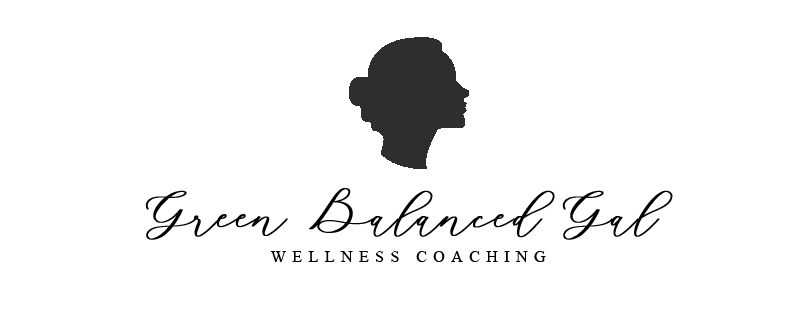Despite the latest efforts to support women in business, many female go-getters still face challenges that block them from reaching their desired level of success. Apart from the struggle to juggle family responsibilities, work, and other obligations, woman can also become easily overpowered by male voices, especially in male-dominated industries. Such adversities and hardships happen often that many women don’t feel confident in venturing into the world of business or other related fields. However, this is no time to let fear or uncertainty stop women from pursuing their passions. More and more women venture into the corporate world, inspiring others to show confidence, be assertive, and even fight inequality in the field. If you’re in the business world or planning to embark on a journey in the workforce, fear not! There are business-focused books and career guides written for you, giving women the skills, knowledge, and confidence needed to thrive in the industry.
The abundance of reading material that you can relate to may overwhelm you. That’s where our list of books for women in business comes into the picture. Most of the books in this collection are written by women who’ve excelled in their field — willing to share their experiences, tips, and wealth of knowledge to emerging and established women in the business sector. Therefore, get comfy and prepare to absorb inspiration from any book on this list!
Table of Contents
Books for Women in Business # 1) Girl, Stop Apologizing: A Shame-Free Plan for Embracing and Achieving Your Goals
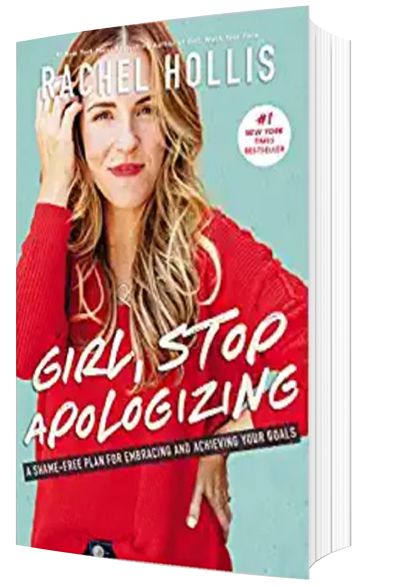 Book Summary: “Hollis’s writing is beautifully blunt, and she humbly thanks her fans for her success. Her actionable ideas and captivating voice will encourage women to believe in themselves.” – Publisher’s Weekly (starred review)
Book Summary: “Hollis’s writing is beautifully blunt, and she humbly thanks her fans for her success. Her actionable ideas and captivating voice will encourage women to believe in themselves.” – Publisher’s Weekly (starred review)
“I believe we can change the world. But first, we’ve got to stop living in fear of being judged for who we are.”
Rachel Hollis has seen it too often: Women not living to their full potential. They feel a tugging on their hearts for something more, but they’re afraid of embarrassment, of falling short of perfection, of not being enough.
In Girl, Stop Apologizing, #1 New York Times bestselling author and founder of a multimillion-dollar media company, Rachel Hollis sounds a wake-up call. She knows that many women have been taught to define themselves in light of other people—whether as wife, mother, daughter, or employee — instead of learning how to own who they are and what they want. With a challenge to women everywhere to stop talking themselves out of their dreams, Hollis identifies the excuses to let go of, the behaviors to adopt, and the skills to acquire on the path to growth, confidence, and believing in yourself. Age Range: Adult.
A 5-Star Review: I read this book a few weeks ago and I had to jump on here and write a review for those looking to purchase now that it’s officually available. First let me start by saying I’m usually the person who will read a book in one day. But I spread this one out so I could savor it and really absorb what our pal Rach was saying. If you are a woman with dreams and goals then you should read this book. Even if you’re not a woman or you don’t have dreams and goals then you should still read this book. Rachel Hollis gives you information that, if you’re like me, you already know in the back of your mind. But she makes you think about it in a new perspective. And she encourages and inspires you to take action. A must read for anyone looking to do better in any regard. 10/10 I would recommend this to everyone.
A Critical Review: It’s like every motivational and self help speaker you ever listened to got quoted (but not necessarily credited) here.
And sadly, for a book published by a Christian publisher and authored by a professing believer, there is a noticeable lack of Biblical support, some profanity, and ideas that just aren’t compatible with the Christian walk.
I just can’t recommend this to anyone.
Books for Women in Business # 2) The 30-Day Money Cleanse: Take control of your finances, manage your spending, and de-stress your money for good
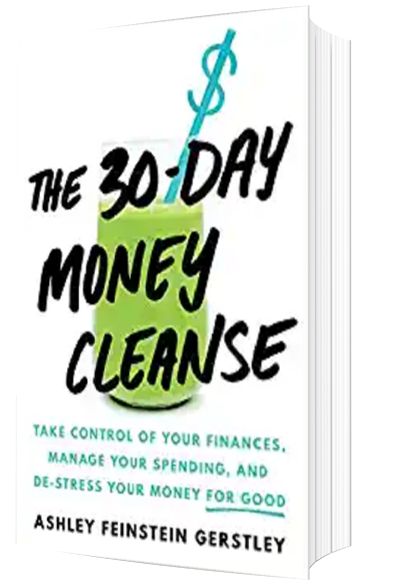 Book Summary: Eliminate your money anxiety and create lasting happiness with your financial situation ― not by creating a blistering budget but by living the life you love!
Book Summary: Eliminate your money anxiety and create lasting happiness with your financial situation ― not by creating a blistering budget but by living the life you love!
Ashley Feinstein Gerstley was working in the financial services industry when she came to the shocking realization that even she was stressed about her personal finances. Ashley quickly realized that her stress didn’t only arise from a lack of knowledge, but from the way that we as a society treat and talk (or rather don’t talk) about money, so she created a system to turn the entire practice on its head! The 30-Day Money Cleanse, named an Amazon Best Book of 2019 So Far, is a groundbreaking money management book that will set readers on the path to financial peace with interactive journaling prompts for accountablility and tracking.
Through Ashley’s system, in just 30 days you’ll create a healthier, happier relationship with your money by:
• Eliminating money stressors
• Creating awareness of where your money is going
• Breaking those panic-inducing bad money habits
• Learning the basics of how and where to invest
• Making a plan that you can not only live with but enjoy
With its cheery and easy-to-follow guide, this is the perfect book on money management for young adults or those looking for an unintimidating guide to managing money. Readers who have tried the 30-Day Money Cleanse have, on average, saved over $950 through the course of a month! Are you ready for financial freedom?
“[An] easy-to-follow guide to creating a healthy personal relationship with money.”―Publishers Weekly
A 5-Star Review: Excellent book! This book aims to help you with money – by speaking to your head and your heart. Like all self-help books, the hardest part is actually implementing the ideas in your life. This is the first book on money that has really helped me to change my habits and my life (for the better)! The main point that stuck with me was “values-based spending.” Basically, the concept is that you should spend money on things that align with what you truly value. It offers a list of values to choose from, and your answers can serve as a roadmap to your life (see picture). It helped me clarify what really is most important to me, and to look at the money I spend in a different way. I highly recommend this book! Please mark if you find my review helpful. Thank you so much!
A Critical Review: A few years ago, I found a financial others that worked well for me. I haven’t seen anything yet that beats that.
In the beginning, before getting to the 4 week plan, this book feels rather unfocused to me. Once we get into the weekly plan, it does get a little better, though still feels at times like there’s a bit too much filler and not enough focus on the actual how-to. There are some really good bits here and I think for some readers, Feinstein Gerstley’s plan may work well, but for me it just missed the mark. I was expecting a more practical, step-by-step guide rather than so much discussion about figuring out what the reader’s goals are and what’s worth spending money on. If you are someone who prefers a lot of discussion, this may work for you. If however, you really just want to get down to the nuts and bolts of getting ahold of your finances and getting serious about reaching your goals, this will likely be a miss for you as well.
Thank you to Ashley Feinstein Gerstley, Sourcebooks and Netgalley for the opportunity to take and review this book. All comments are my own, unbiased opinion.
Books for Women in Business # 3) Alpha Girls: The Women Upstarts Who Took On Silicon Valley’s Male Culture and Made the Deals of a Lifetime
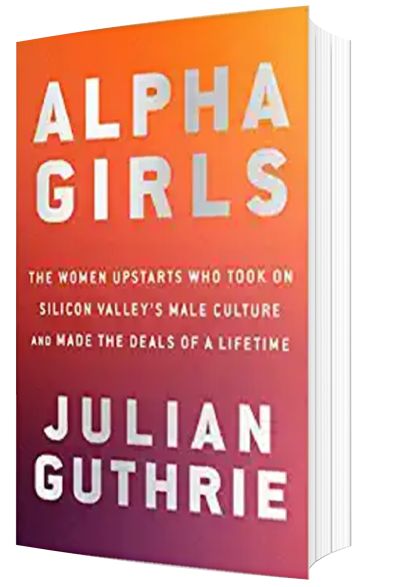 Book Summary: An unforgettable story of four women who, through grit and ingenuity, became stars in the cutthroat, high-stakes, male dominated world of venture capital in Silicon Valley, and helped build some of the foremost companies of our time.
Book Summary: An unforgettable story of four women who, through grit and ingenuity, became stars in the cutthroat, high-stakes, male dominated world of venture capital in Silicon Valley, and helped build some of the foremost companies of our time.
In Alpha Girls, award-winning journalist Julian Guthrie takes readers behind the closed doors of venture capital, an industry that transforms economies and shapes how we live. We follow the lives and careers of four women who were largely written out of history – until now.
Magdalena Yesil, who arrived in America from Turkey with $43 to her name, would go on to receive her electrical engineering degree from Stanford, found some of the first companies to commercialize internet access, and help Marc Benioff build Salesforce. Mary Jane Elmore went from the corn fields of Indiana to Stanford and on to the storied venture capital firm IVP – where she was one of the first women in the U.S. to make partner – only to be pulled back from the glass ceiling by expectations at home. Theresia Gouw, an overachieving first-generation Asian American from a working-class town, dominated the foosball tables at Brown (she would later reluctantly let Sergey Brin win to help Accel Partners court Google), before she helped land and build companies including Facebook, Trulia, Imperva, and ForeScout. Sonja Hoel, a Southerner who became the first woman investing partner at white-glove Menlo Ventures, invested in McAfee, Hotmail, Acme Packet, and F5 Networks. As her star was still rising at Menlo, a personal crisis would turn her into an activist overnight, inspiring her to found an all-women’s investment group and a national nonprofit for girls.
These women, juggling work and family, shaped the tech landscape we know today while overcoming unequal pay, actual punches, betrayals, and the sexist attitudes prevalent in Silicon Valley and in male-dominated industries everywhere. Despite the setbacks, they would rise again to rewrite the rules for an industry they love. In Alpha Girls, Guthrie reveals their untold stories.
A 5-Star Review: This book follows the lives of four women highlighting their childhood to current times as they navigate the male dominated venture capital world of Silicon Valley. It is a fast, good read. I am left thankful that these four women agreed to share their lives and their struggles. I don’t think men with similar stories would have made for a compelling read. Because at the end of the day on a simplistic level, these four women are just good business people doing deals that resulted in lots of returns for their investors. And in the world of vcs, many can claim this title. The difference here, is they faced challenges they didn’t realize going into their profession simply because of their gender. Ultimately, they had to forge new ground and challenge the norms just to do their jobs. As I finished the book, I was saddened that this story is still being told. Women have made strides, but those strides have come with a great cost. Change moves so slowly. Stories like these encourage those who need to know they are not alone and they also show the fortitude needed to compete in male dominated entities.
A Critical Review: I was expecting to get to know more of these women and their ups and downs. Their journey and the complexity of what they achieved. Instead it was basically boiled down to ” they were really smart, worked super hard, and the rest was automatic”.
I am sure the life and deeds of these alpha girls is much richer than this.
The book reads like a list of deals and important/famous persons they worked with and left me with the impression of having 4 almost equal women described to me.
Books for Women in Business # 4) An Economist Walks into a Brothel: And Other Unexpected Places to Understand Risk
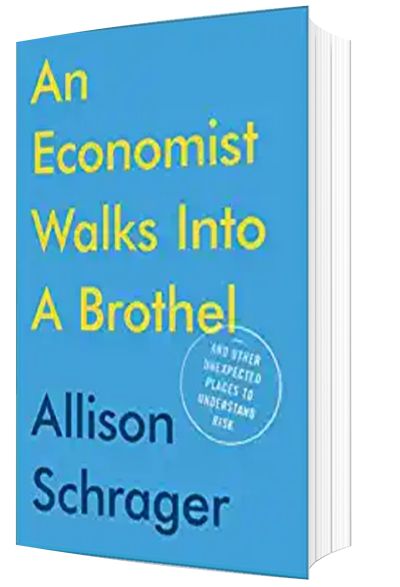 Book Summary: Is it worth swimming in shark-infested waters to surf a 50-foot, career-record wave?
Book Summary: Is it worth swimming in shark-infested waters to surf a 50-foot, career-record wave?
Is it riskier to make an action movie or a horror movie?
Should sex workers forfeit 50 percent of their income for added security or take a chance and keep the extra money?
Most people wouldn’t expect an economist to have an answer to these questions — or to other questions of daily life, such as who to date or how early to leave for the airport. But those people haven’t met Allison Schrager, an economist and award-winning journalist who has spent her career examining how people manage risk in their lives and careers.
Whether we realize it or not, we all take risks large and small every day. Even the most cautious among us cannot opt out — the question is always which risks to take, not whether to take them at all. What most of us don’t know is how to measure those risks and maximize the chances of getting what we want out of life.
In An Economist Walks into a Brothel, Schrager equips readers with five principles for dealing with risk, principles used by some of the world’s most interesting risk takers. For instance, she interviews a professional poker player about how to stay rational when the stakes are high, a paparazzo in Manhattan about how to spot different kinds of risk, horse breeders in Kentucky about how to diversify risk and minimize losses, and a war general who led troops in Iraq about how to prepare for what we don’t see coming.
When you start to look at risky decisions through Schrager’s new framework, you can increase the upside to any situation and better mitigate the downside.
A 5-Star Review: If the title doesn’t induce you to buy this book, then the first few pages will do it. Alison Schrager has done a masterful job explaining in plain English — using rather (ahem) unconventional examples and illustrations — of how to take account of and manage risk in your life, drawing on fundamental lessons of finance and economics. I predict this book will be huge best seller, and help make believers out of some doubters about the usefulness of economic reasoning. An economics and a best seller? — no not a contradiction in terms. This book demonstrates that, get it, read it and you’ll see what I mean
A Critical Review: (CAVEAT: I only made it halfway through before giving up. Perhaps the second half is better, but I doubt it).
I almost never write negative book reviews. I briefly heard Dr Schrager speaking on the radio about some aspect of politics as actually an exercise in risk management. It was an unusual approach expressed cogently and interestingly so I thought, “I bet her book is great”.
(I’m not an economist and I haven’t read any of the popularizations of behavioral economics etc but I’ve absorbed enough of it from the ether that I’m probably a good audience for this book: interested but not very knowledgeable)
Nope. Once you get past the title example (why legal sex work commands a premium over criminalized sex work), the book’s ideas are repetitive, obvious, and not that well – developed. She doesn’t go deep enough into any aspect of them, the examples she uses, or the complexity of human thinking, behavior or institutions to make you want to read the next paragraph. It’s made worse by a light, condescending, gee-whiz tone that bad teachers use for high school students.
Steven Johnson and Michael Lewis have proved over and over that it’s possible to popularize complex topics in ways that make for compelling reading. This is not on that. In retrospect, I should have been alerted by the fact that all the cover blurbs are from friends, none from reviewers.
Books for Women in Business # 5) How Women Rise: Break the 12 Habits Holding You Back from Your Next Raise, Promotion, or Job
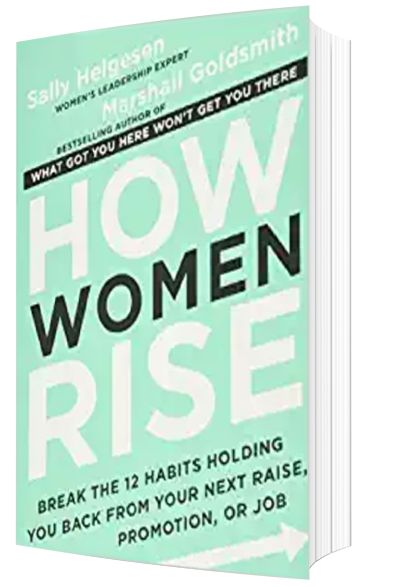 Book Summary: Overcome the twelve habits holding you back and take your career to new heights with this wise and approachable guide from two business leadership experts.
Book Summary: Overcome the twelve habits holding you back and take your career to new heights with this wise and approachable guide from two business leadership experts.
Ready to take the next step in your career . . . but not sure what’s holding you back? Read on. Leadership expert Sally Helgesen and bestselling leadership coach Marshall Goldsmith have trained thousands of high achievers — men and women — to reach even greater heights. Again and again, they see that women face specific and different roadblocks from men as they advance in the workplace. In fact, the very habits that helped women early in their careers can hinder them as they move up. Simply put, what got you here won’t get you there . . . and you might not even realize blind spots until it’s too late. Are you great with the details? To rise, you need to do less and delegate more. Are you a team player? To advance, you need to take credit as easily as you share it. Are you a star networker? Leaders know that a network is no good unless you know how to use it. Sally and Marshall identify the twelve habits that hold women back as they seek to advance, showing them why what worked for them in the past might actually be sabotaging their future success. Building on Marshall’s classic bestseller What Got You Here Won’t Get You There, How Women Rise is essential reading for any woman who is ready to advance to the next level.
A 5-Star Review: OK. I am a guy who bought the book, How Women Rise. Let me share some background, before I attempt to share the immense value of this resource.
Sally Helgesen’s book, The Female Advantage, was read in 1996, my first year as an entrepreneurial organizational development specialist. I had not read many, if any leadership books penned by women in the ten years that preceded Sally’s book, and the title intrigued me. I read Marshall’s book, What Got You Here Won’t Get You There, in 2007; it was so good that I purchased Triggers shortly after it was published. That book helped me significantly with changing a number of interpersonal behaviors, which I still have to monitor.
Leadership, the development of individuals and teams toward their perpetual effectiveness and performance potentials, is obviously not a one-gender issue. Most large organizations in the 1960s through 1980s thought so, as the management teams were predominantly male-oriented. As a soft-skills, content developer and classroom facilitator/trainer, I wanted to utilize every possible concept, resource, and idea that would resonate with learners and empower them to help their direct reports become confident, self-motivated, task-effective performers.
I would say that How Women Rise is a solidly reliable resource for helping others, not just women, identify, then deal with the habits/default behaviors that might currently be holding them back. The book is VERY interesting!! While I chose to read the book sequentially, another reader might choose to review the twelve habits that block effectiveness, then investigate the few habit-chapters that seem to be most like them.
The case study examples given in the book are specific, concise, and illustrate how the individuals are initially and negatively impacted by their then current blind spots. The individuals share how their less-than-effective performances impacted their relationships with their bosses and show how they eventually chose to respond more effectively to overcome those situations and significantly improve those relationships, gaining confidence and performance-momentum in the process.
Before I typed this line, I went back into the book and read habit 11, Ruminating. Ruminators live in the past, and they are the predominant Kierseyian temperament (SJ) in organizations. They dwell on the past, trying to mentally improve what (or who) went wrong. The authors do an noteworthy job of explaining how rumination is a waste of time and energy, and they offer solid suggestions for helping move beyond it! The same holds true for each of the other eleven habit-chapters.
This book would seem appropriate for use in undergraduate programs of all types. Why not identify and address habits that are probably already at work, as one approaches his or her studies, life, etc.?
Finally, personality type theory suggests that Thinkers make their decisions objectively, based upon logic, facts, and truth, while Feelers make their decisions subjectively, based upon values and impact upon people. Two-thirds of the men are Thinkers, and one-third are Feelers. Two-thirds of the women are Feelers, and one-third are Thinkers. I am one of those men who makes feelings-base decisions.
So, we have women who think like a man, and we have men who feel/make decisions like a woman. This may at least one reason why How Women Rise resonated with me. Kudos to Sally and Marshall for their most productive effort; it certainly fills a void that has been sorely needed!
Bill Parker
A Critical Review: This is a very easy read, but I found that the cures for the bad habits they identified might just lead to something else my managers wouldn’t like. There is a reason they call it the double bind. I would have liked it if they had addressed hidden gender bias (second generation bias) which underlies the double bind, but early on they said they wouldn’t do that because they wanted to identify behaviors within your control. But how much control have I exercised if I simply evoke a different reason I am not qualified, or likable. Seems like there has to be a way to address unconscious bias.
Books for Women in Business # 6) Radical Candor: Fully Revised and Updated Edition: How to Get What You Want by Saying What You Mean
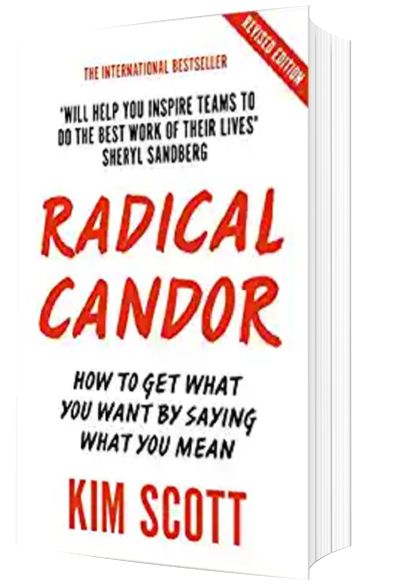 Book Summary: Radical Candor is the sweet spot between managers who are obnoxiously aggressive on the one side and ruinously empathetic on the other. It’s about providing guidance, which involves a mix of praise as well as criticism, delivered to produce better results and help employees develop their skills and boundaries of success. Great bosses have a strong relationship with their employees, and Kim Scott has identified three simple principles for building better relationships with your employees: make it personal, get stuff done, and understand why it matters. Radical Candor offers a guide to those bewildered or exhausted by management, written for bosses and those who manage bosses. Drawing on years of first-hand experience, and distilled clearly to give actionable lessons to the reader, Radical Candor shows how to be successful while retaining your integrity and humanity. Radical Candor is the perfect handbook for those who are looking to find meaning in their job and create an environment where people both love their work, their colleagues and are motivated to strive to ever greater success.
Book Summary: Radical Candor is the sweet spot between managers who are obnoxiously aggressive on the one side and ruinously empathetic on the other. It’s about providing guidance, which involves a mix of praise as well as criticism, delivered to produce better results and help employees develop their skills and boundaries of success. Great bosses have a strong relationship with their employees, and Kim Scott has identified three simple principles for building better relationships with your employees: make it personal, get stuff done, and understand why it matters. Radical Candor offers a guide to those bewildered or exhausted by management, written for bosses and those who manage bosses. Drawing on years of first-hand experience, and distilled clearly to give actionable lessons to the reader, Radical Candor shows how to be successful while retaining your integrity and humanity. Radical Candor is the perfect handbook for those who are looking to find meaning in their job and create an environment where people both love their work, their colleagues and are motivated to strive to ever greater success.A 5-Star Review: I hardly write reviews for books, but this one is worth the read. I’m only half way through and she’s brought so much clarity to my management failures and triumphs. I now understand the things that made me fail my first time around and successful my subsequent times around. And now that I have a framework to understand, I feel like I can build a team that reflects accordingly.
Good times. Thanks Kim. Is it too passive aggressive for me to give my current manager a copy of this book?
A Critical Review: As with many books in this genre, this one was helpful occasionally, too specific most of the time (expect to get nothing from the middle chapters if you aren’t in a tech firm), often self contradictory (“no one is a top performer” but a few pages later “reward your top performers”), and a quick read. I am glad I read it and I definitely took away some useful tidbits. Unfortunately, I think the key notions and examples could have been just as easily communicated in a blog post. I’m a little shocked the author has formed a whole company around this concept as it’s fairly simple. Tips about how to phrase feedback were especially useful, and many anecdotes were enjoyable. The text was, however, undermined by some baseless ageism (‘millennials do this or that’), needless repetition, and a little too much namedropping for my taste.
Books for Women in Business # 7) Boss Up!: This Ain’t Your Mama’s Business Book
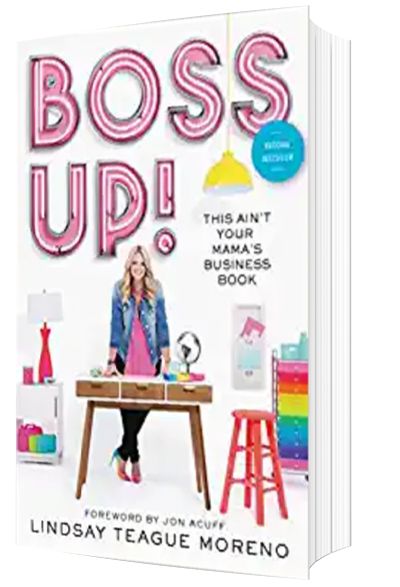 Book Summary: Boss Up! will help you put your business on the map and the ideas you’ve previously only dreamed about into the marketplace. Learn to overcome your fears and guilt to find a fulfillment that changes you and your family for the better— breaking free of the hard and boring and having fun along the way.
Book Summary: Boss Up! will help you put your business on the map and the ideas you’ve previously only dreamed about into the marketplace. Learn to overcome your fears and guilt to find a fulfillment that changes you and your family for the better— breaking free of the hard and boring and having fun along the way.
In Boss Up! Lindsay helps you gain confidence to understand that having ambition doesn’t make you a bad wife or mother. That it’s okay to have a desire for something more than endless sippy cups, clean-ups, Band-Aids, and groundings. That no matter your education or experience, you can tap into your passions and create businesses that give you increased flexibility, fulfillment, and financial security.
Lindsay doesn’t just do this through commiserating, but by giving you the tools for change. Using the lessons she learned on her own path to success, Lindsay shares real, solid business principles with ten distinct success philosophies that you will encounter on the journey to entrepreneurship, such as:
• Thinking long-term
• Being unapologetically yourself
• Use the “unsales” tactic
• Understand your why”
Lindsay is a stay-at-home mom turned multimillion-dollar-producing business owner, but she doesn’t just have a passion for entrepreneurship. She has a deep passion for helping women of all walks of life gain the confidence and skills to tap into their ambition and achieve success in their own business endeavors. Are you ready to Boss Up?
A 5-Star Review: I am not married. I am not a mother. These two things are important to note because Lindsay makes it clear – in a good way – that this is her target audience. However, I sit outside the margin of that target and there is still a place for me at this table of hers and I am thankful.
This book is real. Lindsay puts it out there. She tells you where she royally screwed up and how she succeeded. In a world where people Ra-ra about all their successes all the time this is powerful.
This book is practical. There is not ethereal pie in the sky story here. Lindsay has done her work. She busted her butt against a lot of naysayers, she sacrificed things in the short term for the long term gain, and she tells you exactly how she went about doing in practical steps that anyone can take and apply to their own business.
This book is funny! Lindsay tells it like it is and adds a dash of humor that makes her feel like she is the best friend you’ve always known was out there.
This book is a game changer. As an entrepreneur with both a network marking business and a consulting business the one thing I struggled with was I didn’t fit in the boxes everyone wanted me to be in. This book & Lindsay’s story are an encouragement for those who don’t fit into boxes others try to put us in. It gives us permission to go out and do things the way that we are gifted and created to do them in…and shows that by doing that you can be successful.
I highly recommend grabbing this book. But I don’t recommend getting it if you are going to read it and then put it on a shelf and say “that’s nice.” Grab it, mark it up…take the steps outlined in it to move toward your own goals and dreams. Boss up, Baby….Boss Up.
A Critical Review: Between an unbelievable amount of fluff, talking down mom’s who actually enjoy mom-ing, repeatedly admitting that she preyed upon entrepreneurial focused moms for her products and that she was ”good” at getting people to do what she wanted.. i found it difficult to continue past chapter 4.
This book is unbelievably egocentric. As a working mom, i find deep fulfillment in myself as a mother; but also as a wife and business operator. Yet numerous times this book pushes that you’ve forgotten the “old you” and must live and pursue life as you did before children.
I find it hard to support or learn from a self centered woman who preyed upon women’s weaknesses and dreams to get herself ahead, while bashing the women who are happy with themselves, their parenting and marriages.
Things certainly aren’t perfect. I expected a book to help me boss up and manage my business a little more professional..not a memoir of pointless egocentric fluff
Books for Women in Business # 8) Drop the Ball: Expect Less from Yourself and Flourish in Work and Life
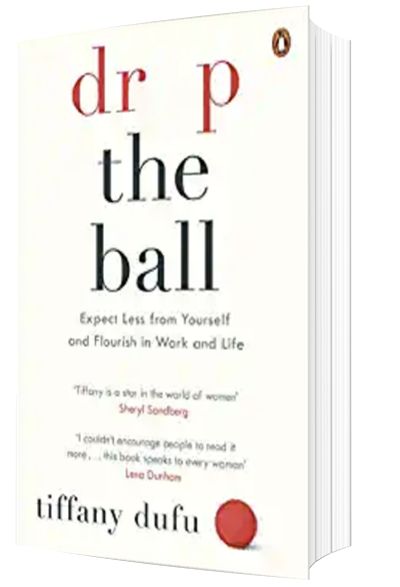 Book Summary: An inspirational and insightful guide for those who want to get it all by doing less
Book Summary: An inspirational and insightful guide for those who want to get it all by doing less
For women, a glass ceiling at work is not the only barrier to success – it’s also the increasing number of obligations they face once they leave the office. Women have become accustomed to delegating, advocating and negotiating for themselves in the workplace, but when it comes to managing home life, they are still juggling too many balls. A simple solution is staring them in the face: use these skills to negotiate in their personal lives.
In Drop The Ball, Tiffany Dufu urges the reader to embrace imperfection, to expect less of themselves and more from others – enabling them to flourish at work and develop deeper, more meaningful relationships at home.
A 5-Star Review: Its obvious this book is a must read for today’s women, who are seeking ways to thrive, but I HIGHLY recommend this book for the men – husbands, dads and male leaders. As I read this book, I’ve gained empathy and a new perspective I only sensed before but didn’t quite understand completely until Tiffany made it clear for me. I now have a new lens for what my wife has done and is doing, to be an amazing wife, mother and career professional. Despite already being a proud and ‘active’ dad, I now understand her challenges and am attempting to step up to the plate and do more, to allow more balance in our marriage and parental roles, and to allow her an opportunity to be all she can be. Thanks, Stephen H.
A Critical Review: I was expecting more from this book. It felt more like an autobiography than advice.
Books for Women in Business # 9) How to Change: The Science of Getting from Where You Are to Where You Want to Be
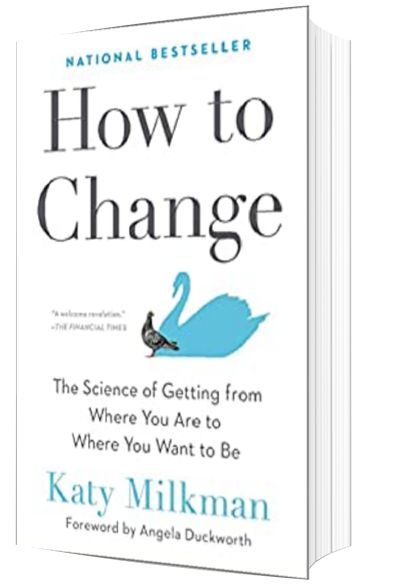 Book Summary:
Book Summary:
Wall Street Journal bestseller
“A welcome revelation.” — The Financial Times
Award-winning Wharton Professor and Choiceology podcast host Katy Milkman has devoted her career to the study of behavior change. In this ground-breaking book, Milkman reveals a proven path that can take you from where you are to where you want to be, with a foreword from psychologist Angela Duckworth, the best-selling author of Grit.
Change comes most readily when you understand what’s standing between you and success and tailor your solution to that roadblock. If you want to work out more but find exercise difficult and boring, downloading a goal-setting app probably won’t help. But what if, instead, you transformed your workouts so they became a source of pleasure instead of a chore? Turning an uphill battle into a downhill one is the key to success.
Drawing on Milkman’s original research and the work of her world-renowned scientific collaborators, How to Change shares strategic methods for identifying and overcoming common barriers to change, such as impulsivity, procrastination, and forgetfulness. Through case studies and engaging stories, you’ll learn:
• Why timing can be everything when it comes to making a change
• How to turn temptation and inertia into assets
• That giving advice, even if it’s about something you’re struggling with, can help you achieve more
Whether you’re a manager, coach, or teacher aiming to help others change for the better or are struggling to kick-start change yourself, How to Change offers an invaluable, science-based blueprint for achieving your goals, once and for all.
A 5-Star Review: “Who is this Katy Milkman, and how can a milkman be named Katy? Shouldn’t it be milkperson?” These were my addled late-night thoughts while first seeing a Very Interesting Person’s tweet recommending ‘How to Change’. Now, of the 180 or so nonfiction books I read every year, I pre-order only around ten. These are usually books that I just *know* are going to be great, like David Eagleman’s “Livewired: The Inside Story of the Ever-Changing Brain” or Adam Grant’s “Think Again”. (Or books by friends who would disown me if I didn’t buy their little brainchild.) But this recommendation had the credibility of a certain MacArthur Fellow behind it (Hi Angie!). Also, as a self-proclaimed behavioral change therapist and Happiness Engineer, it’s not like I had a choice — change *is* my beat. So I gritted my teeth and bought it sight unseen, author unknown, hoping for the best.
And you know what? Turns out this book *is* the best! Some reasons why I dig ‘How to Change’:
• This is a supremely well-structured book. Eight chapters: Getting Started; Impulsivity; Procrastination; Forgetfulness; Laziness; Confidence; Conformity; and a Conclusion. Clear subheadings, illustrated by vivid stories and examples. This is obviously the product of a very organized mind, so it totally makes sense that Prof Milkman trained as an engineer. I particularly appreciate the succinct “Chapter Takeaways” summarizing key ideas.
• The combination of Milkman’s deft storytelling and fluent prose made this a fast and compelling read. On my Kindle at 10pm, done by one!
• This book has about as much fat as an Olympic sprinter. Lean and pithy, it delivers its literally life-changing payload in about 200 pages, avoiding the tendency of some books to add heft without substance.
So what’s the book about? So glad you asked. Here’s the deal: behavior change is hard, and no technique works 100% of the time. This book is about how science can help you stack the deck in your favor when change is probabilistic in nature. Some examples:
• “Fresh starts” help a lot. Pick a milestone date with a clear before and after, like Jan 1 or your birthday, to make change more likely to stick. Sure, 80% of New Year’s Resolutions fail, but that 20% success rate is still higher than any other time you could pick.
• Like cherry-flavored cough syrup, injecting some fun into work makes it go down easier. “Temptation bundling” adds a pleasant activity to an otherwise onerous one. Who knew that my patented technique of pairing a great audiobook with a boring run was scientifically validated!
• Control procrastination by restricting your choices via a “commitment device” — e.g. self-imposed deadlines or cash commitments à la Stickk.
• In the same way that cheering someone else up is the best way to boost your mood, mentoring someone else is the best way to achieve more.
• If forgetting is one of the main reasons why we don’t change, then the gold standard antidote is “cue-based planning”: “These plans link a plan of action with a cue and take the form ‘When X happens, I’ll do Y.’ Cues can be anything that triggers your memory, from a specific time or location to an object you expect to encounter.” Make an “implementation intention” for the how, where and when you’ll do stuff, and stuff miraculously gets done.
The book also addresses the subtleties of how otherwise effective techniques can sometimes backfire. For example, if you had a fresh start imposed on you when you were already doing well, you’re likely to backslide instead of progress. Rigid habits (e.g. meditating every day at the same time) work well, but can also go to zero when disrupted; flexible habits are more robust. And being amongst a high-achieving peer group can motivate us, but if they’re too far ahead of us with nobody in the middle zone, we tend to give up. This is particularly important in countries with a gutted middle-class and widening inequality gap; those left behind may fall into despair.
Leonardo da Vinci once said, “Simplicity is the ultimate sophistication.” Katy Milkman has taken a huge pile of data and scrunched it down to its easily digestible essence, crafting that ultimate sophistication of simplicity. This actionable collection of science-based methods for change should be a reference for all students, teachers, coaches, high achievers, or anyone who has ever struggled as they strive to thrive as a human. Get it to grow even faster.
— Ali Binazir, M.D., M.Phil., Chief Happiness Engineer and author of The Tao of Dating: The Smart Woman’s Guide to Being Absolutely Irresistible, the highest-rated dating book on Amazon, and Should I Go to Medical School?: An Irreverent Guide to the Pros and Cons of a Career in Medicine
A Critical Review: Unfortunately I expected something else. I expected a book about “how to change”, but this book is about the Author – what she has done, what she has achieved, what mistakes she has made, what she has read and learned, with whom she talked and worked, and so on, and so on, and so on. It’s a kind of diary of the researcher who – after several experiments – discovers a common sense. For example the Author discovers that a reminder an hour before the meeting is more effective than a reminder two days before the meeting.
Books for Women in Business # 10) Radical Candor: Fully Revised & Updated Edition: Be a Kick-Ass Boss Without Losing Your Humanity
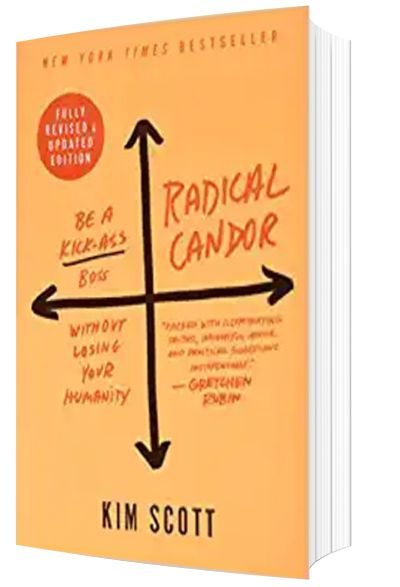 Book Summary:
Book Summary:
* New York Times and Wall Street Journal bestseller multiple years running
* Translated into 20 languages, with more than half a million copies sold worldwide
* A Hudson and Indigo Best Book of the Year
* Recommended by Shona Brown, Rachel Hollis, Jeff Kinney, Daniel Pink, Sheryl Sandberg, and Gretchen Rubin
Radical Candor has been embraced around the world by leaders of every stripe at companies of all sizes. Now a cultural touchstone, the concept has come to be applied to a wide range of human relationships.
The idea is simple: You don’t have to choose between being a pushover and a jerk. Using Radical Candor ― avoiding the perils of Obnoxious Aggression, Manipulative Insincerity, and Ruinous Empathy ― you can be kind and clear at the same time.
Kim Scott was a highly successful leader at Google before decamping to Apple, where she developed and taught a management class. Since the original publication of Radical Candor in 2017, Scott has earned international fame with her vital approach to effective leadership and co-founded the Radical Candor executive education company, which helps companies put the book’s philosophy into practice.
Radical Candor is about caring personally and challenging directly, about soliciting criticism to improve your leadership and also providing guidance that helps others grow. It focuses on praise but doesn’t shy away from criticism―to help you love your work and the people you work with.
Radically Candid relationships with team members enable bosses to fulfill their three core responsibilities:
1. Create a culture of Compassionate Candor
2. Build a cohesive team
3. Achieve results collaboratively
Required reading for the most successful organizations, Radical Candor has raised the bar for management practices worldwide.
A 5-Star Review: I hardly write reviews for books, but this one is worth the read. I’m only half way through and she’s brought so much clarity to my management failures and triumphs. I now understand the things that made me fail my first time around and successful my subsequent times around. And now that I have a framework to understand, I feel like I can build a team that reflects accordingly.
Good times. Thanks Kim. Is it too passive aggressive for me to give my current manager a copy of this book?
A Critical Review: As with many books in this genre, this one was helpful occasionally, too specific most of the time (expect to get nothing from the middle chapters if you aren’t in a tech firm), often self contradictory (“no one is a top performer” but a few pages later “reward your top performers”), and a quick read. I am glad I read it and I definitely took away some useful tidbits. Unfortunately, I think the key notions and examples could have been just as easily communicated in a blog post. I’m a little shocked the author has formed a whole company around this concept as it’s fairly simple. Tips about how to phrase feedback were especially useful, and many anecdotes were enjoyable. The text was, however, undermined by some baseless ageism (‘millennials do this or that’), needless repetition, and a little too much namedropping for my taste.
Books for Women in Business # 11) Thrive: The Third Metric to Redefining Success and Creating a Life of Well-Being, Wisdom, and Wonder
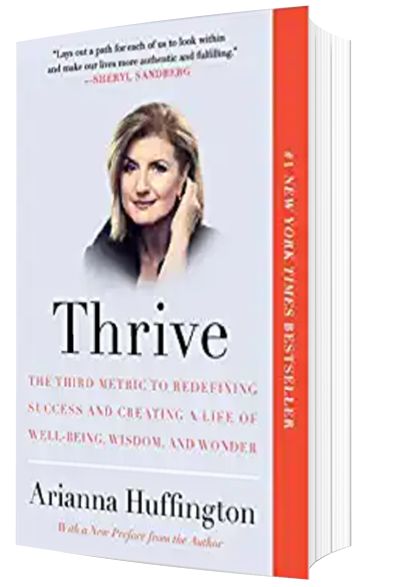 Book Summary: In Thrive, Arianna Huffington makes an impassioned and compelling case for the need to redefine what it means to be successful in today’s world.
Book Summary: In Thrive, Arianna Huffington makes an impassioned and compelling case for the need to redefine what it means to be successful in today’s world.
Arianna Huffington’s personal wake-up call came in the form of a broken cheekbone and a nasty gash over her eye–the result of a fall brought on by exhaustion and lack of sleep. As the cofounder and editor-in-chief of the Huffington Post Media Group–one of the fastest growing media companies in the world–celebrated as one of the world’s most influential women, and gracing the covers of magazines, she was, by any traditional measure, extraordinarily successful. Yet as she found herself going from brain MRI to CAT scan to echocardiogram, to find out if there was any underlying medical problem beyond exhaustion, she wondered is this really what success feels like?
As more and more people are coming to realize, there is far more to living a truly successful life than just earning a bigger salary and capturing a corner office. Our relentless pursuit of the two traditional metrics of success–money and power–has led to an epidemic of burnout and stress-related illnesses, and an erosion in the quality of our relationships, family life, and, ironically, our careers. In being connected to the world 24/7, we’re losing our connection to what truly matters. Our current definition of success is, as Thrive shows, literally killing us. We need a new way forward.
In a commencement address Arianna gave at Smith College in the spring of 2013, she likened our drive for money and power to two legs of a three-legged stool. They may hold us up temporarily, but sooner or later we’re going to topple over. We need a third leg–a third metric for defining success–to truly thrive. That third metric, she writes in Thrive, includes our well-being, our ability to draw on our intuition and inner wisdom, our sense of wonder, and our capacity for compassion and giving. As Arianna points out, our eulogies celebrate our lives very differently from the way society defines success. They don’t commemorate our long hours in the office, our promotions, or our sterling PowerPoint presentations as we relentlessly raced to climb up the career ladder. They are not about our resumes — they are about cherished memories, shared adventures, small kindnesses and acts of generosity, lifelong passions, and the things that made us laugh.
In this deeply personal book, Arianna talks candidly about her own challenges with managing time and prioritizing the demands of a career and raising two daughters — of juggling business deadlines and family crises, a harried dance that led to her collapse and to her “aha moment.” Drawing on the latest groundbreaking research and scientific findings in the fields of psychology, sports, sleep, and physiology that show the profound and transformative effects of meditation, mindfulness, unplugging, and giving, Arianna shows us the way to a revolution in our culture, our thinking, our workplace, and our lives.
A 5-Star Review: I purchased Arianna’s book because I took her and Oprah’s online “Thrive OCourse” back in April. One of the wonderful aspects of “Thrive” is that you can skip around and open the book to anything without feeling like you’ve missed something. Her course actually demanded that you read it in this way for the most part.
We’ve all had “wake-up calls” in our life even if we do not recognize them right away. Arianna shares her call in a vulnerable way which created thinking in me about my own. Reading her words of thriving in this chaotic world allowed me to focus a bit more on what is truly important in life and what I am passionate about which allows a further focus on what my purpose is.
Listening to our inner voice is a big deal with me. Thanks to Arianna, I began a meditation practice during her course, but specifically when I read her words on page 136, “Meditation, yoga and mindfulness can help us to still the noise of the world so we can listen to our inner voice.” She’s right. These words lead me to where I am now with a Primordial Sound Meditation practice I learned from the Chopra Institute.
When you read a book that leads you to other transformational aspects of your life, which also continue, then you’ve read a great book.
I highly recommend, “Thrive”. Five stars.
A Critical Review: Thrive: The Third Metric to Redefining Success and Creating A Life of Wellbeing, Wisdom, and Wonder by Arianna Huffington is an important book about defining success and how you attain it. I wish it were a better book.
If you are an aggressive, ambitious person who knows you’re working too hard and sacrificing important parts of life to your success, this book is for you. If you’re struggling to make ends meet or in a stage of life where you have both kids and a career, you’ll find a lot of what’s here gratuitous. It’s easy for someone who has attained both prestige and wealth by working hard and putting in long hours to tell you you shouldn’t work so hard and that money is not that important.
The core message is important, though. Decide what you want from your life and career. Measure your sacrifice against potential gain. If you’re in mid-career, aggressive, ambitious mode you should take better care of yourself and your relationships.
Too Much and Too Little
There is a lot of information here about living better. Alas, the author stacks studies one on top of another, mentioning each one, but not doing much to evaluate or connect them. She doesn’t give you much detail, either.
There are lots of good ideas here. That’s a plus. The author buries many of them under deadening prose, though. There’s too much about Arianna and her sister. There are far too many promotional mentions of The Huffington Post. If this is the only book you read, you might think The Huffington Post is the only media outlet in the world.
In A Nutshell
This book is for you if you think you work too hard and make the wrong kinds of sacrifices. There’s good information, and lots of pointers to more information. With all its faults, I think the first third of Thrive: The Third Metric to Redefining Success and Creating A Life of Wellbeing, Wisdom, and Wonder is worth the price of the book.
This book is not for you if you don’t have a lot of options. Don’t read this book if you’re working hard and not getting enough sleep or exercise or good nutrition because you don’t have much of a choice. You already know you need to sleep more, eat right, and exercise. You don’t need this book to tell you that.
Books for Women in Business # 12) Invisible Women: Data Bias in a World Designed for Men
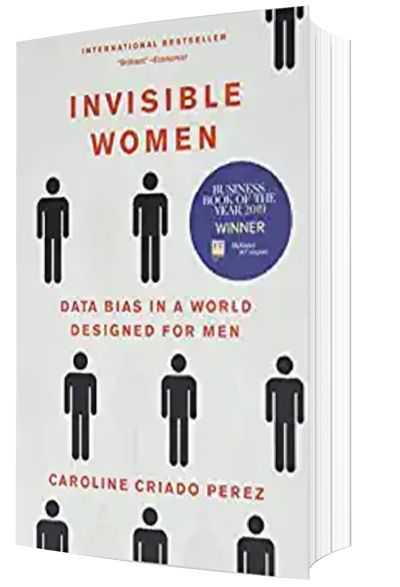 Book Summary: A landmark, prize-winning, international bestselling examination of how a gender gap in data perpetuates bias and disadvantages women, now in paperback
Book Summary: A landmark, prize-winning, international bestselling examination of how a gender gap in data perpetuates bias and disadvantages women, now in paperback
Winner of the 2019 Financial Times and McKinsey Business Book of the Year Award
Winner of the 2019 Royal Society Science Book Prize
Data is fundamental to the modern world. From economic development to health care to education and public policy, we rely on numbers to allocate resources and make crucial decisions. But because so much data fails to take into account gender, because it treats men as the default and women as atypical, bias and discrimination are baked into our systems. And women pay tremendous costs for this insidious bias, in time, in money, and often with their lives. Celebrated feminist advocate Caroline Criado Perez investigates this shocking root cause of gender inequality in the award-winning, #1 international bestseller Invisible Women. Examining the home, the workplace, the public square, the doctor’s office, and more, Criado Perez unearths a dangerous pattern in data and its consequences on women’s lives. Product designers use a “one-size-fits-all” approach to everything from pianos to cell phones to voice recognition software, when in fact this approach is designed to fit men. Cities prioritize men’s needs when designing public transportation, roads, and even snow removal, neglecting to consider women’s safety or unique responsibilities and travel patterns. And in medical research, women have largely been excluded from studies and textbooks, leaving them chronically misunderstood, mistreated, and misdiagnosed. Built on hundreds of studies in the United States, in the United Kingdom, and around the world, and written with energy, wit, and sparkling intelligence, this is a groundbreaking, highly readable exposé that will change the way you look at the world.
A 5-Star Review: I’m a man, and I knew the problems with women’s data not being collected and women’s needs not being met in the world were bad, but not THIS bad. There are many great sources of data for these claims throughout the book; so many, in fact, that I started to feel overwhelmed after a while.
But guys, we have to read sources like these and motivate ourselves to do better. The women in our lives deserve that, at the very least.
A Critical Review: The book spend an ENORMOUS amount of time talking about the trials and tribulations faced by women with children quite as if, the concept of female was entirely interchangeable with mother. I got the impression that women who do not have children are quite as invisible to this author as she claims women on the whole are to most men. When the author started advocating 12 month maternity leave for mother only I gave up on it. What about those individuals with minor or moderate physical disabilities who would also benefit from parking closer to the building, and more paid time away from the job to tend to their very REAL healthcare needs, these women and men are clearly invisible to this author, I work in a hospital and from what I have observed the out of all the departments in the hospital, including outpatient surgery, the OB has the healthiest patients and one of the lowest mortality rates, so why does a two day stay in the OB garner a minimum of 6 weeks paid leave when end stage renal disease gives you four days a year tops before you have to be back to work? It sound great to say that women should have 12 months off to spend with their new children, but don’t these children have fathers wouldn’t the fathers like to spend some time with them as well? The author merrily ignores the co-workers of the new parents who are routinely “asked” to cancel vacations sacrifice time with their families and freinds and put their personal lives on hold to contribute to this state of maternal bliss, the childless, the elderly who are past childbearing and might want to start cutting back the hours a day they work or who are already partially retired are invisible non-entities in this model that elevates motherhood to goddess like status in the workplace. This book has it’s own bias similar to that which I have observed to often in the medical profession, when it says “woman” it means uterus, breasts, and children, and not the people who make up the female half of the population, some of whom will not have uteri, some of whom will not have breasts, and many of whom will not have young children.
Books for Women in Business # 13) The Making of a Manager: What to Do When Everyone Looks to You
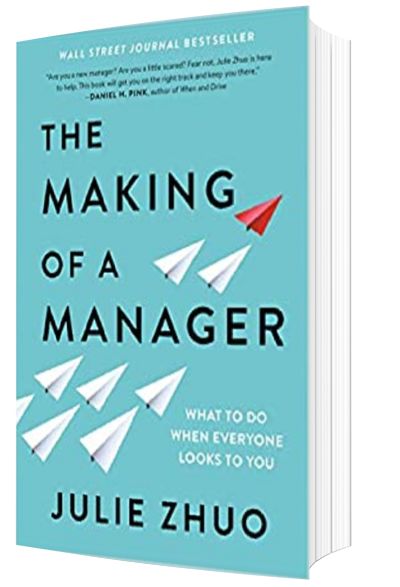 Book Summary: Instant Wall Street Journal Bestseller!
Book Summary: Instant Wall Street Journal Bestseller!
Congratulations, you’re a manager! After you pop the champagne, accept the shiny new title, and step into this thrilling next chapter of your career, the truth descends like a fog: you don’t really know what you’re doing.
That’s exactly how Julie Zhuo felt when she became a rookie manager at the age of 25. She stared at a long list of logistics — from hiring to firing, from meeting to messaging, from planning to pitching — and faced a thousand questions and uncertainties. How was she supposed to spin teamwork into value? How could she be a good steward of her reports’ careers? What was the secret to leading with confidence in new and unexpected situations?
Now, having managed dozens of teams spanning tens to hundreds of people, Julie knows the most important lesson of all: great managers are made, not born. If you care enough to be reading this, then you care enough to be a great manager.
The Making of a Manager is a modern field guide packed everyday examples and transformative insights, including:
* How to tell a great manager from an average manager (illustrations included)
* When you should look past an awkward interview and hire someone anyway
* How to build trust with your reports through not being a boss
* Where to look when you lose faith and lack the answers
Whether you’re new to the job, a veteran leader, or looking to be promoted, this is the handbook you need to be the kind of manager you wish you had.
A 5-Star Review: When I was partway through The making of a manager: what to do when everyone looks to you I was sure that I would be giving this an unqualified five-star review. Then, I got to the second half.
There are two very different halves to this book. I’ll cut to the chase about whether this is a great book for you.
The first half of the book is excellent and helpful for almost anyone. The second half of the book may be for you if you work at Facebook or a company very much like it.
Here’s how Ms. Zhuo defines a manager’s job. “A manager’s job is to help her team get better results.” That’s the key insight for the book. It’s clear and actionable. It’s true no matter who you are or where you work as a manager.
If you’re thinking about becoming a manager this is a great book for you.
If you’re thinking about becoming a manager. buy this book. In the section that begins on 28, Ms. Zhou asks you questions about who you are and what you’re like. She describes how your answers can help you decide if management is for you. Those few pages are worth the price of the book. They may keep you from making a terrible, irreversible mistake. If management is not for you, it’s good to know before you become one. The key insight is that you must love the work.
If you’re a new manager, this is a great book for you.
It usually takes a new manager a year or two to settle into the job, learn the basics, and manage effectively. If you’re somewhere in that first two years, buy this book. Ms. Zhuo’s descriptions of a manager’s work are clear, and you’ll be able to see yourself in them. Her analysis is good and includes ideas about what you can and should do. She describes her mistakes and misconceptions.
Now for the second half of the book.
The second half of the book will be great for you if you work at Facebook. It will be good for you if you work in a creative job in a tech company, especially one experiencing hyper-growth. It will not be so good for you if you work at a trucking company or a clothing store or any smaller company. Here’s why I think the second half of the book is so different from the first half.
Ms. Zhuo implies that she’s new and remembers the beginning well. Here’s a quote from the Introduction.
“I thought, Maybe I can write this book, because it’s more relevant for a certain group of people now: new managers thrown into the deep end, overwhelmed managers wondering how to best help their reports, managers dealing with fast-growing teams, or those simply curious about management. I was one of them not so long ago.”
When this book came out, she had been at Facebook for more than a decade and she was the VP of Product Design. In February 2020, she left Facebook to become a cofounder of InSpirit. But here’s the thing. The first half of the book sounds like “not so long ago.” The second half sounds like reflections of someone who’s been a manager for a while.
I suspect she may have written the first at one time and the other material much later.
The writing styles are very different. The first half flows easily and sounds natural. The second half is how authors write when they must finish by a deadline.
I would have preferred an excellent book for new managers in any kind of company. That’s the first 150 pages. I could have done without the last 150 pages, even if the publisher thought it was necessary.
In A Nutshell
If you’re thinking about becoming a manager, buy The making of a manager: what to do when everyone looks to you. Read the section on what managers do that begins about page 28.
If you’re a new manager, especially if you’re in your first two years, buy this book and read the first half.
What about the second half? Start reading it. You’ve already invested in the book and gotten your money’s worth from the first half. Read the second half as long as it stays interesting and helpful.
A Critical Review: I had high hopes for this book, but it did not resonate with me at all. I don’t thinkI was the target audience. If you’ve ever managed or lead a team in any capacity, you are the wrong target audience for this book. If you work in an industry outside of tech, many of the lessons will not apply in your industry. However, if you are young and early in your career, and you work with wealthy, liberal, coastal millenials in technology, and if you’ve never been in a leadership or management position, you could probably get something out of this book. Or you could just listen to the author’s interviews on podcasts.
Books for Women in Business # 14) Digital Body Language: How to Build Trust and Connection, No Matter the Distance
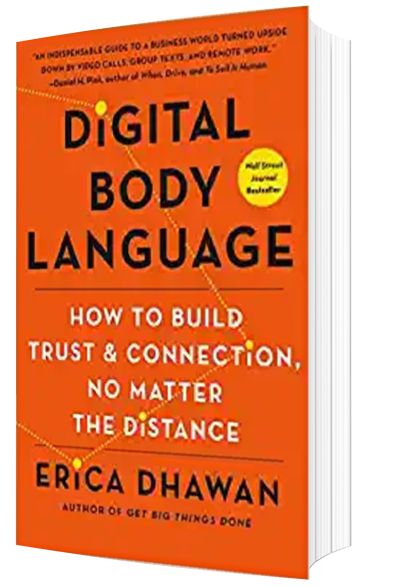 Book Summary: An instant Wall Street Journal Bestseller
Book Summary: An instant Wall Street Journal Bestseller
The definitive guide to communicating and connecting in a hybrid world.
Email replies that show up a week later. Video chats full of “oops sorry no you go” and “can you hear me?!” Ambiguous text-messages. Weird punctuation you can’t make heads or tails of. Is it any wonder communication takes us so much time and effort to figure out? How did we lose our innate capacity to understand each other?
Humans rely on body language to connect and build trust, but with most of our communication happening from behind a screen, traditional body language signals are no longer visible — or are they? In Digital Body Language, Erica Dhawan, a go-to thought leader on collaboration and a passionate communication junkie, combines cutting edge research with engaging storytelling to decode the new signals and cues that have replaced traditional body language across genders, generations, and culture. In real life, we lean in, uncross our arms, smile, nod and make eye contact to show we listen and care. Online, reading carefully is the new listening. Writing clearly is the new empathy. And a phone or video call is worth a thousand emails.
Digital Body Language will turn your daily misunderstandings into a set of collectively understood laws that foster connection, no matter the distance. Dhawan investigates a wide array of exchanges ― from large conferences and video meetings to daily emails, texts, IMs, and conference calls―and offers insights and solutions to build trust and clarity to anyone in our ever changing world.
A 5-Star Review: This book is a great read; it’s a worthy buy and it will inspire you to make the changes you want to see happen in your digital workplace. You will read several very entertaining stories about many people who have mastered or failed at digital body language and what to do differently moving forward. No matter what you get out of it, you won’t be disappointed. 🙂
A Critical Review: I purchased this because I saw it recommended by Adam Grant. Do not waste your money unless you are a complete novice in this area. If you have a modicum of experience, it is mostly fluff and not worth the time or money, especially in hardback.
Books for Women in Business # 15) The Culture Map: Breaking Through the Invisible Boundaries of Global Business
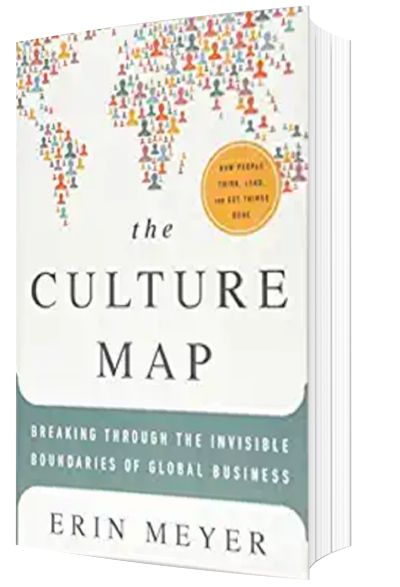 Book Summary: An international business expert helps you understand and navigate cultural differences in this insightful and practical guide, perfect for both your work and personal life.
Book Summary: An international business expert helps you understand and navigate cultural differences in this insightful and practical guide, perfect for both your work and personal life.
Americans precede anything negative with three nice comments. French, Dutch, Israelis, and Germans get straight to the point. Latin Americans and Asians are steeped in hierarchy. Scandinavians think the best boss is just one of the crowd. It’s no surprise that when they try and talk to each other, chaos breaks out.
In The Culture Map, INSEAD professor Erin Meyer is your guide through this subtle, sometimes treacherous terrain in which people from starkly different backgrounds are expected to work harmoniously together. She provides a field-tested model for decoding how cultural differences impact international business, and combines a smart analytical framework with practical, actionable advice.
A 5-Star Review: Really good for international relations. I work in a global role. I can’t tell you the number of times I’ve had a German, an American, and a Chinese person all on the same call. The cultures are so different that the interactions can quickly go awry. The German will be the most abrupt, seeming to interrupt, being totally blunt, and not realizing he could offend. The Chinese will be the quietest, waiting to ask their turn to speak, sometimes having an underlying meaning behind the words that isn’t blunt, and being very careful to not offend. The American will be in the middle. What could happen is that the Chinese person finds the German to be a rude, heartless boor. The German will think the Chinese person not forceful, not direct enough, and pussy-footing around. The reality is, we all have different cultural heritages which overlay our perceptions that we aren’t fully aware of. Meyer has worked quite a bit internationally and has 8 attributes where the different cultures are put on various continuum. After reading this, I came away being more effective in my global interactions and have now led several discussions successfully. And of course, learning to be aware of my own cultural issues…
A Critical Review: My rough summary is that it’s got some solid, actionable data and recommendations, but could have easily been a 20 page PPT and been just as effective. That said, it’s a very quick read. There are 8 main “scales” that the author talks about:
-Communicating (“Communicating Across Cultures”)
–Low vs. high Context communication styles
–Context here means how much one assumes the recipients know contextually
–Western countries tend to be low context (assumes recipients know very little, and therefore spend a lot more time on introducing the agenda, repeating it, sending out follow up emails, etc.)
Eastern countries tend to be high context (assumes the opposite, and therefore communication style is more sophisticated and nuanced, and often requires reading between the lines)
– Evaluating (“Evaluating Performance and Providing Negative Feedback”)
— Negative feedback is much more direct in countries such as Russia, France, Israel, Netherlands, Germany, etc.
— Negative feedback is much more indirect in Eastern countries
— The US, UK, and Canada tend to fall in the middle, where we hem and haw and eventually give the negative feedback but offset it with plenty of positive feedback
– Persuading (“The Art of Persuasion in a Multicultural World”)
— Main kinds: applications-first, principles first, and holistic
— Applications-first persuasion style is one where it begins with a statement and is then supported by examples, etc., and tends to avoid theoretical or philosophical discussions (US an outlier on its own in the extreme, but also Canada, Australia, UK, Netherlands)
— Principles-first persuasion style is to develop the theory first and then talk about the current situation (Italy, France, Germany, Russia, etc.)
— Asian countries tend to take a holistic approach slightly different than the two kinds described above
— This ironically was the least persuasive of the “8 scales”… the concepts were a bit messy
– Leading (“Leadership, Hierarchy, and Power”)
— Egalitarian (Scandinavian countries, Israel, Canada, US) and Hierarchical (Asian countries, many African and Latin countries, Russia, etc.) styles – fairly self-explanatory
– Deciding (“Who Decides, and How?”)
— Consensual (Japan, Sweden, Netherlands, Germany) and Top-down (India, China, Russia, etc.) styles, with US and UK being approximately in the middle
— The other issue brought up is how some cultures (US, UK) regard decisions as temporary and subject to change, whereas others view them as fairly final decisions and proceed accordingly
– Trusting (“Two Types of Trust and How They Grow”)
— Building trust is done one of two ways: through tasks (US, Denmark, Netherlands) or through relationships (India, China, Nigeria, Brazil, etc.)
— Task based trust involves trusting someone based on how one works with them, whereas relationship based trust is involves getting to know someone (think of long dinners where no business is discussed and the players just get to know one another better)
– Disagreeing (“The Needle, Not the Knife”)
— Confrontational (Israel, France, Germany, Netherlands, etc.) versus avoiding confrontation (Asian countries, India, etc.), with US and UK falling in the middle
– Scheduling (“Scheduling and Cross-Cultural Perceptions of Time”)
— Do I even need to elaborate? We all know which cultures have reputations for punctuality or for being “flexible” (some Indian weddings have two invites – one for “white people” and one for those from the culture in order to address this problem!)
The actionable part is generally understanding these concepts, how different countries fall on different parts of each scale, and taking that information into your dealings with those from other cultures.
Pretty simple and occasionally valuable stuff. 6/10.
Books for Women in Business # 16) The Manager’s Path: A Guide for Tech Leaders Navigating Growth and Change
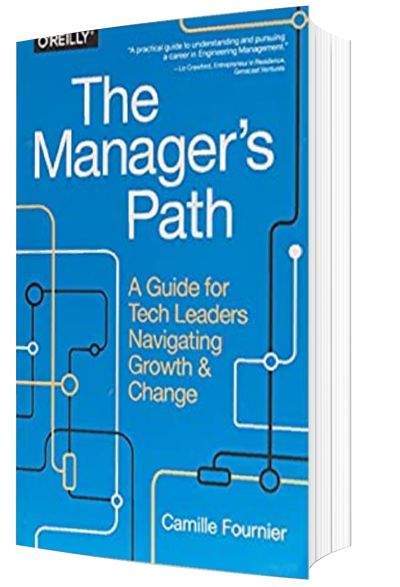 Book Summary: Managing people is difficult wherever you work. In the tech industry, where management is also a technical discipline, the learning curve can be brutal—especially when there are few tools, texts, and frameworks to help you. In this practical guide, author Camille Fournier (tech lead turned CTO) takes you through each stage in the journey from engineer to technical manager.
Book Summary: Managing people is difficult wherever you work. In the tech industry, where management is also a technical discipline, the learning curve can be brutal—especially when there are few tools, texts, and frameworks to help you. In this practical guide, author Camille Fournier (tech lead turned CTO) takes you through each stage in the journey from engineer to technical manager.
From mentoring interns to working with senior staff, you’ll get actionable advice for approaching various obstacles in your path. This book is ideal whether you’re a New manager, a mentor, or a more experienced leader looking for fresh advice. Pick up this book and learn how to become a better manager and leader in your organization.
• Begin by exploring what you expect from a manager
• Understand what it takes to be a good mentor, and a good tech lead
• Learn how to manage individual members while remaining focused on the entire team
• Understand how to manage yourself and avoid common pitfalls that challenge many leaders
• Manage multiple teams and learn how to manage managers
• Learn how to build and bootstrap a unifying culture in teams.
A 5-Star Review: Becoming an effective leader — technical or not — requires making big lateral jumps in scope, type of work, and how you engage with your and surrounding teams. The sooner you realize that “what got you here won’t help you there”, the faster you can make a successful transition (or backtrack!) and less pain everyone will endure.
Camille provides a great, unvarnished and hands-on tour of her own career from an engineer to a tech lead, to manager (lead and manager are often confused and conflated, but are very different roles), to manager of managers (a MoM :)), to executive leader responsible for aligning product and technical execution. As you would expect, the story is a rollercoaster with many wins and just as many setbacks and lessons along the way. The good news is, we can all learn from Camille’s experience without repeating all (or some, at least) the same mistakes.
The strength of this book is that it takes you all the way from engineer to CTO, with hands-on illustrations in major role and expectation (both the good and the bad) shifts along the way: we all know that Director or VP that clings on to writing code at a detriment to their team; a TL that hordes decision making; a MoM that lost touch with technical foundation of the product; etc. This book will help you avoid these traps, both in your own career and on your team.
In short, a modern hands-on manual for both the aspiring and existing technical leaders, and a sound time investment — read it.
A Critical Review: I manage a software team around 10 people in the past 10 years in Beijing. The last time I worked for a North American company was from 2004 to 2008 when I worked for Motorola. That is one of reasons I recently read the book “The Manager’s Path” by Fournier Camille because I want to know the difference in management practices. I suspect there won’t be too much, after all we develop software, we use agile process and we all use open source software. And fundamentally our job is to let our team members do their jobs better.
After reading the book I am a bit confused for some areas. For example, what a typical day looks like for middle management because this is one area I saw the difference.
In Chapter 3 “Tech Lead” she described quite some responsibilities a tech lead has except for leading technical decisions, which are actually my responsibilities, i.e. managing a project, “tech leads will be working on one major new technical skill: project management. The work of breaking down a project has a lot of similarity to the work of designing systems…”
In Chapter 5. “Managing a Team” she wrote “while the product manager is responsible for the product roadmap, and the tech lead is responsible for the technical details you are usually accountable for the team’s progress…”
But what does a typical day look like then if product, technics and project are someone else’s responsibilities? I mean do 1-1, performance reviews, interact with HR, meeting with other departments/teams can’t take your whole day, right? Or will it? Creating a culture in the team is our responsibility too, but how does it map to your daily job ?
Books for Women in Business # 17) Trust Yourself: Stop Overthinking and Channel Your Emotions for Success at Work
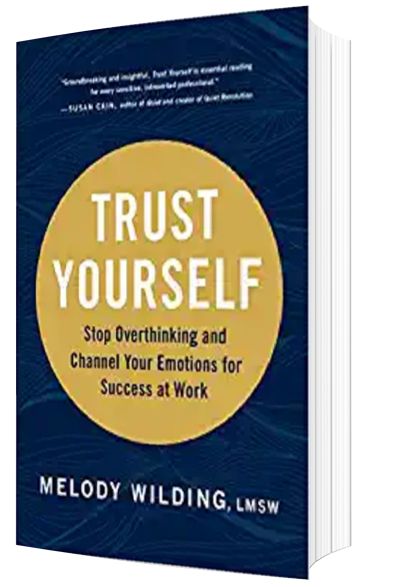 Book Summary: Are you a Sensitive Striver? Learn how to get out of your own way and rediscover your sensitivity as a superpower.
Book Summary: Are you a Sensitive Striver? Learn how to get out of your own way and rediscover your sensitivity as a superpower.
___ Highly sensitive and high performing?
___ Need time to think through decisions before you act?
___ Judge yourself harshly when you make mistakes?
___ Take feedback and criticism personally?
___ Find it difficult to set boundaries?
It’s time to Trust Yourself. Being highly attuned to your emotions, your environment, and the behavior of others can be the keys to success, but they can also lead to overthinking everything and burnout. Human behavior expert and executive coach Melody Wilding, LMSW has spent the past ten years working with Sensitive Strivers like you. In this groundbreaking book, she draws on decades of research and client work to examine the intersection of sensitivity and achievement in the workplace and offer neuroscience-based strategies you can use to reclaim control of your life and reach your full potential.
Trust Yourself offers concrete steps to help you break free from stress, perfectionism, and self-doubt so you can find the confidence to work and lead effectively. You will learn how to:
• Achieve confidence and overcome imposter syndrome.
• Find your voice to speak and act with assertiveness.
• Build resilience and bounce back from setbacks.
• Enjoy your success without sacrificing your well-being.
If you’re an empathetic, driven person trying to navigate your career and learn how to believe in yourself in the process, Trust Yourself offers the mindset and tools to set you on the path to personal and professional fulfillment.
The perfect book for:
• Those who identify as highly sensitive
• Anyone who overthinks or struggles with work stress and burnout
• Corporate professionals of all levels
• Managers, leaders, and executives
• Life, career, and leadership coaches
A 5-Star Review: I’m not sure when or how I discovered Melody Wilding. I believe it was through LinkedIn. If you are LinkedIn regular, you can tell who stands out and who will go places just looking at what they share, what their profiles include. I was so happy to read that Melody was in the process of publishing her book.
I wish “Trust Yourself” was available 20+ years ago. In my career, I wasted too much time feeling awkward, isolated, and not part of the “in crowd.” As I read Melody’s articles and this amazing book, I am able to recognize my uniqueness and my worth. I know it sounds silly for a middle-aged corporate woman, who has been in the corporate/business world for 30+ years will need such support. Yes we do!… us introverts, highly sensitive professionals, and empaths — we do need the extra push, the extra validation, and the extra support. I have added Melody’s book to my own Survival Kit.
Each night I read about 5-10 pages of the book. I treat it as a working manual, highlight things, mark-up action items. Melody also has made documents available online if you want to complete things on paper vs. in the book, which is very helpful. I am so grateful I discovered Melody Wilding. I look forward to her future work as well.
Thank you.
A Critical Review: This is helpful to those who may be new to the career world. Everyone else, I would skip this book.
Books for Women in Business # 18) Unapologetically Ambitious: Take Risks, Break Barriers, and Create Success on Your Own Terms
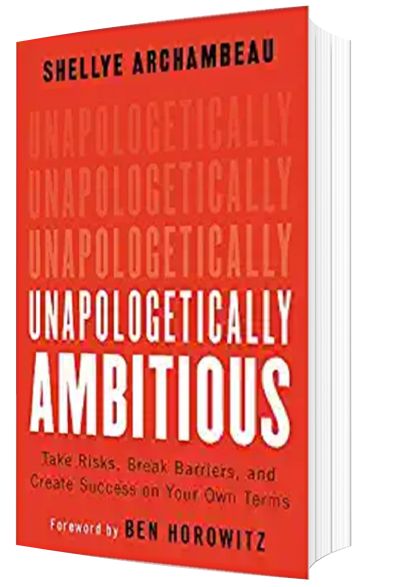 Book Summary: Full of empowering wisdom from one of Silicon Valley’s first female African American CEOs, this inspiring leadership book— named a Best Business Book of the Year by Fortune and Bloomberg — offers a blueprint for how to achieve your personal and professional goals.
Book Summary: Full of empowering wisdom from one of Silicon Valley’s first female African American CEOs, this inspiring leadership book— named a Best Business Book of the Year by Fortune and Bloomberg — offers a blueprint for how to achieve your personal and professional goals.
Shellye Archambeau recounts how she overcame the challenges she faced as a young black woman, wife, and mother, managing her personal and professional responsibilities while climbing the ranks at IBM and subsequently in her roles as CEO. Through the busts and booms of Silicon Valley in the early 2000s, this bold and inspiring book details the risks she took and the strategies she engaged to steer her family, her career, and her company MetricStream toward success.
Through her journey, Shellye discovered that ambition alone is not enough to achieve success. Here, she shares the practical strategies, tools, and approaches readers can employ right now, including concrete steps to most effectively:
• Dismantle impostor syndrome
• Capitalize on the power of planning Capitalize on the power of planning
• Take risks
• Developing financial literacy
• Build your network Build your network
• Establish your reputation
• Take charge of your career
• Integrate work, marriage, parenthood, and self-care
Each chapter lays out key takeaways and actions to increase the odds of achieving your personal and professional goals. With relatable personal stories that ground her advice in the real world and a foreword by leading venture capitalist and New York Times bestselling author Ben Horowitz, Unapologetically Ambitious invites readers to move beyond the solely supportive roles others expect them to fill, to learn how to carefully tread the thin line between assertive and aggressive, and to give themselves permission to strive for the top. Make no apologies for the height of your ambitions. Shellye Archambeau will show you how.
A 5-Star Review: Shellye Archambeau’s new book titled, Unapologetically Ambitious is a must read for any female leader and the sooner you read her book, the better off you’ll be.
In this easy to read book, you’ll learn Shellye’s story of facing repeated adversity from a very young age to a defining moment where she doesn’t want to have to choose between tolerating cold temperature in her home to having to save up for college. This moment lights a fire under Shellye to stop at nothing in order to achieve success. No strong person has an easy past, and Shelly’s story confirms this because she takes no shortcuts throughout her journey. Every success she achieves is through sheer hard work and meticulous planning. She did her homework at every step of the way.
A few of my favorite parts include:
· Her strategic examination and mapping of IBM leadership routes to her devising a plan based on what she learned.
· Her bold questioning of a high profile Venture Capitalist before confirming her new role.
· Her keen insight to presenting a slide deck in a particular way to better connect with her international audience (found in chapter 27 – my favorite).
· Her smart decision to go external to find customer pain points to help her software company thrive.
A Critical Review: Author led a life of privilege. Where is the struggle when your father is an IBM executive and hands you an internship there? Author I’d the same age as I am. I was immediately turned off by stories of cross country flights, hotel stays, etc. while she was in the first grade!!!! 🙄
Books for Women in Business # 19) Memo
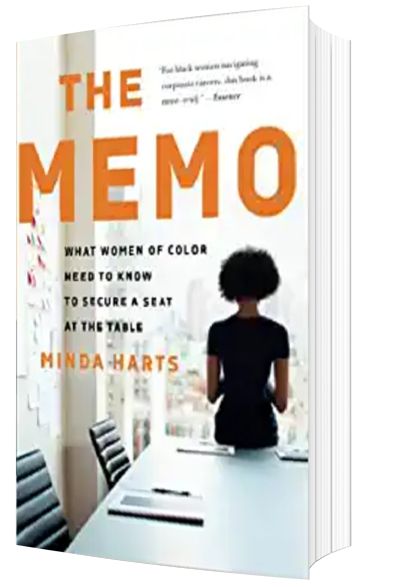 Book Summary: From microaggressions to the wage gap, The Memo empowers women of color with actionable advice on challenges and offers a clear path to success.
Book Summary: From microaggressions to the wage gap, The Memo empowers women of color with actionable advice on challenges and offers a clear path to success.
Most business books provide a one-size-fits-all approach to career advice that overlooks the unique barriers that women of color face. In The Memo, Minda Harts offers a much-needed career guide tailored specifically for women of color.
Drawing on knowledge gained from her past career as a fundraising consultant to top colleges across the country, Harts now brings her powerhouse entrepreneurial experience as CEO of The Memo to the page. With wit and candor, she acknowledges “ugly truths” that keep women of color from having a seat at the table in corporate America. Providing straight talk on how to navigate networking, office politics, and money, while showing how to make real change to the system, The Memo offers support and long-overdue advice on how women of color can succeed in their careers.
A 5-Star Review: This book is full of practical career advice for anyone struggling to navigate the unwritten rules of corporate America. What makes The Memo unique is that it centers the experience of black women in the workplace. Harts provides community for women of color and holds the rest of us accountable for overlooking, ostracizing, and excluding the most educated demographic in our talent pool. I am grateful for this work, which accomplished so much in its 240 pages.
A Critical Review: When someone continually uses the phrase “white people” to ascribe the behaviors of one person to an entire group of people, that is just as racist as a different person using “black people” to ascribe the behaviors of one person to an entire group of people. She could improve this book by writing about her specific white boss, her specific white co-worker, etc. without trying to make it about ALL “white people”. She really could have written a better book – she could have taken the route of Oprah with something like “Lessons from a black woman on how I succeeded in corporate America”. She would have still been reaching out to her identified (repeatedly) target audience while also making it more inclusive. But maybe she did not want any “white people” to read her book.
Books for Women in Business # 20) The One-Minute Money Mentor for Women: 21 Strategies for Financial Empowerment
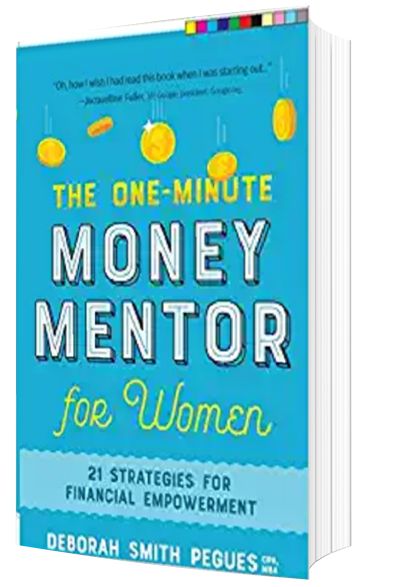 Book Summary: Financial Freedom: It’s not about wealth — it’s about peace of mind
Book Summary: Financial Freedom: It’s not about wealth — it’s about peace of mind
Money — and all the worries that come with it —can easily consume your days. In certified accountant Deborah Smith Pegues’s new book, she provides practical steps to real financial freedom.
If you want to make well-informed financial decisions to improve the quality of your life, The One-Minute Money Mentor for Women will help you learn:
• how to use your inherent female qualities for financial empowerment
• how you can overcome emotional and relational roadblocks to money management
• how to ask for what you want in the workplace
• strategies for getting out of debt and bringing your credit cards under control
• the risks and rewards of investing, and much more
The One-Minute Money Mentor for Women will empower you to take charge of your money and conquer the bad habits, fears, and uncertainties that thwart your stability and success.
A 5-Star Review: Do you expect to pick up a book on finance and get smacked in the face with domestic abuse? I know I didn’t, but the scene described in the very first lines of Chapter 1 somehow resonated within me. It whispered revelationally: take note here, that the way you have been with money correlates to the way you got started in relationships.
I was hooked at that point.
Turning the final page and closing the book, I was moved to examine my childhood, heart and hurts in order to put Mrs. Pegues’ money tips into the right perspective and practice. So, the 21 strategies were just (rather delicious) icing on the cake—it was the vital ingredient disclosed on the very first page that truly opened my eyes to see what financial peace and freedom are rooted in. [I also loved the conversational-like gems for women, she sprinkled throughout the strategies.]
No other book I’ve read on finance has provided that revelation off-the-bat. And for that reason, I’m more than grateful for the “One-Minute Money Mentor for Women.” You are truly anointed, and this book drips with it, Mrs. Deborah Pegues!
A Critical Review: This book is fine if you’re looking for someone’s interpretation of biblical reasons why you should feel fine amassing wealth. It didn’t sit well with me and wasn’t at all what I was looking for. I find the cover misleading. I don’t have those particular hangups and I find the use of religion in this context particularly distasteful. Others might not and that’s okay, too.
Many women don’t feel confident entering the business sector, intimidated by society’s expectations and stereotypes. Others may have established a successful career, but maintaining that progress and financial success can be challenging. Fret not! Many business-focused books address and explore the challenges faced by women while providing actionable advice to help you dominate the industry. These books come from expert entrepreneurs and accomplished women, aiming to help other women achieve their desired success. If you’re missing that internal force to pursue your position in the business world, grab any of these books and begin your journey today!
